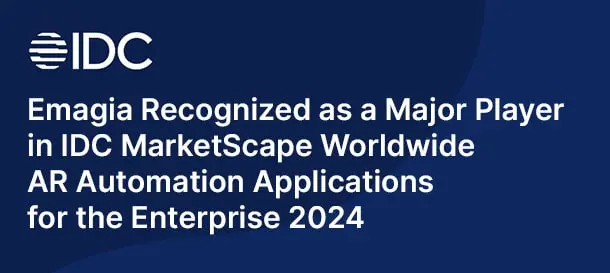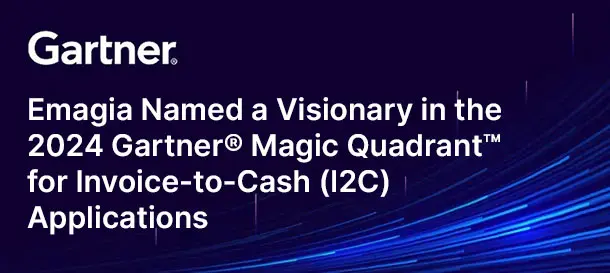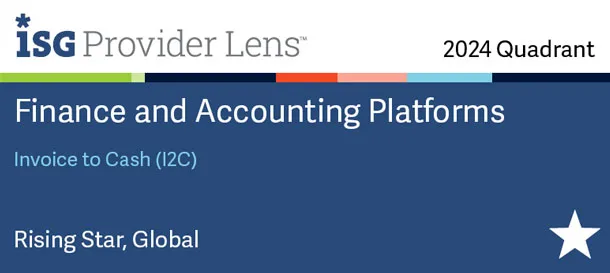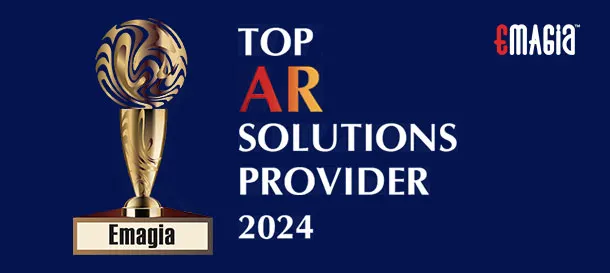In our increasingly digital world, the ease of online transactions has become a cornerstone of daily life. From buying event tickets to settling utility bills, paying remotely offers undeniable convenience. Yet, this flexibility often comes with an unexpected addition: the convenience fee. Many consumers find themselves asking, “what is a convenience fee?” or “what is convenience charges?”, and perhaps most importantly, “how to avoid convenience fee?”
An extra charge, often called a convenience charge, can feel like an unwelcome surprise, adding a percentage or flat rate to your total. Grasping the convenience fee meaning is essential for navigating today’s payment landscape effectively. This comprehensive guide will explain the convenience fee definition, explore why businesses impose them, identify common scenarios where they apply, and equip you with practical strategies to minimize or avoid them entirely. By understanding these charges, you can make smarter payment choices and keep more of your hard-earned money.
What Exactly is a Convenience Fee?
Let’s define convenience fees. A convenience fee is an additional sum charged by a merchant or service provider when a customer chooses to use a non-standard or alternative payment method. Unlike traditional methods such as cash, checks, or direct debit, which typically don’t incur extra costs for the consumer, these fees apply when you opt for payment channels that offer added ease, like online portals, credit card payments, or phone transactions.
The core idea behind a convenience charge is to cover the incremental costs associated with providing and processing these particular payment options. For instance, when you see a credit card convenience fee, it’s often the merchant passing on a portion of the processing fees charged by credit card companies and payment networks. Understanding “what is a convenience fee” at its most basic level helps clarify why you might see it appear on your bill.
Why Do Businesses Charge Convenience Fees?
Businesses levy a convenience charge to offset the various expenses incurred when facilitating modern, non-traditional payment methods. While these digital options enhance customer experience, they aren’t without cost for the merchant. The reasons “why do businesses charge convenience fees” are multifaceted:
- Payment Processing Costs: The most significant reason. Credit card companies and payment processors charge merchants interchange fees, assessment fees, and various markups for every transaction. These fees can be substantial, especially for credit card payments, making a credit card convenience fee a way for businesses to recoup these expenses rather than absorbing them entirely.
- Technology and Infrastructure Investment: Setting up and maintaining secure online payment portals, integrating with third-party payment apps, and handling phone payments all require significant investment in technology, software licenses, and ongoing maintenance. The convenience fee helps to cover these operational and infrastructure costs.
- Administrative Overheads: Managing multiple payment channels and reconciling transactions can add to a business’s administrative burden and labor costs.
- Risk Management: Some digital transactions carry higher risks of fraud or chargebacks. Businesses may factor in these potential costs and the resources needed for dispute resolution into their convenience fees.
- Offering Customer Choice: Many businesses choose to offer a wide array of payment options as a customer service. By charging a convenience charge, they can provide these flexible methods without significantly impacting their core profit margins, especially for transactions where traditional methods are also available.
Ultimately, a convience fee allows businesses to continue providing diverse and easy payment methods without bearing all the associated costs, passing a portion to the consumer who benefits from the convenience.
Where You Typically Encounter Convenience Fees
Convenience fees are prevalent across various industries where digital or remote payment options are common. Here are some of the most frequent scenarios where you might see an extra convenience charge:
Online Bill Payments for Utilities and Services
Many utility companies (electricity, water, gas), internet providers, and even government agencies for services like tax payments (e.g., via Payusatax convenience services) or vehicle registration, often apply a convenience fee when you pay online or over the phone with a credit or debit card. While highly convenient, this digital processing comes with a cost they may pass on.
Event and Entertainment Ticket Purchases
Booking tickets for concerts, sporting events, theater performances, or even movie tickets (like the AMC convenience fee) through online platforms or apps almost universally includes a convenience charge. These fees help cover the costs of the ticketing platform, secure transaction processing, and digital ticket delivery. The convenience fee AMC charges allows for seamless seat selection and purchase from anywhere.
Parking Services and Tolls
Modern parking apps and services often include a small convenience fee for the ease of paying for parking directly from your phone, bypassing physical meters. Similarly, some electronic toll payment systems or online transactions for tolls may incur a convenience charge if not using their standard pre-registered accounts.
Educational Institutions and Government Services
Colleges and universities may charge a convenience fee for tuition payments made online with a credit card. Similarly, various government departments, when offering digital payment options for licenses, permits, or fines, might add a convenience charge to cover processing.
Strategies to Avoid Convenience Fees
While convenience fees can seem unavoidable, there are often smart ways to bypass these extra costs. Being proactive and informed about your payment options can lead to significant savings. Here’s how to avoid convenience fee charges:
1. Opt for the Standard, Fee-Free Payment Method
The simplest way to bypass a convenience charge is to use the business’s standard or preferred payment method, which is typically free for the consumer. This usually includes cash, checks, or direct bank transfers (ACH). These methods incur lower processing costs for the merchant, allowing them to offer them without an added fee.
2. Pay In Person or By Mail
If geographical proximity allows, making your payment in person at the business location often provides the option to pay with cash or check without any convenience fee. For bills, mailing a check is almost always a fee-free option, though it requires planning for postal delivery times.
3. Use Debit Cards or Direct Bank Transfers (ACH) Instead of Credit Cards
Many businesses that charge a credit card convenience fee will waive fees for debit card payments or direct transfers from your bank account via ACH. Debit card processing fees for merchants are typically lower than credit card fees, and ACH transfers are often the cheapest for them. Always check if a debit card or bank transfer option is available as a fee-free alternative.
4. Explore the Business’s Own Online Portal
Sometimes, third-party payment apps or portals levy a convenience charge, while the business’s own official website or direct online payment system offers a fee-free option. Always visit the service provider’s official site first to check for their direct payment options.
5. Inquire About Alternative or Waived Options
Don’t hesitate to ask! For larger transactions or if you’re a loyal customer, some businesses may be willing to offer an alternative fee-free payment method or even waive the convenience fee upon request. A polite inquiry can sometimes lead to an unexpected saving.
6. Consider Payment Apps with Linked Bank Accounts
Certain payment apps or services might allow you to link directly to your bank account for transactions, which can sometimes bypass convenience fees that apply to credit card payments. Always review the specific terms and conditions of the app.
The Legal Landscape: Are Convenience Fees Allowed?
The legality of charging a convenience fee can be intricate, varying significantly by jurisdiction (state or country), industry, and the specific rules set by credit card networks (Visa, Mastercard, etc.). Generally, convenience fees are permissible under certain conditions, primarily centered on transparency and disclosure:
- Clear Disclosure: Businesses are almost universally required to disclose any convenience charge clearly and prominently *before* the customer commits to the transaction. This ensures the consumer has sufficient notice and can choose an alternative payment method to avoid the fee.
- Reasonable Amount: While no universal cap exists, the fee is generally expected to be reasonable and not excessive in relation to the actual cost of providing the convenience.
- Non-Discriminatory Application: Rules might dictate that if a convenience fee applies to one alternative payment method, it should apply to others similarly.
- Credit Card Network Rules: Major credit card networks have specific guidelines regarding convenience fees (and surcharges). These rules often dictate that a credit card convenience fee must be for a truly “alternative” payment channel (e.g., online payment when an in-person, fee-free option exists) and sometimes specify it must be a flat fee, not a percentage.
Understanding the Difference: Convenience Fee vs. Surcharge
It’s crucial to distinguish between a convenience fee and a surcharge, as they are often confused and have different legal implications:
- Convenience Fee: This is a charge for using an *alternative* or *non-standard* payment channel or method. The key element is that the merchant must provide at least one readily available, standard payment method (like cash, check, or often debit card) for the same transaction that does *not* incur this fee. The fee is for the “convenience” of using a specific channel.
- Surcharge: This is an extra charge added solely for the privilege of using a credit card as the payment method, regardless of the channel. Surcharges are typically a percentage of the transaction amount and are designed to recoup the general cost of accepting credit cards. Laws regarding surcharges are stricter, and they are prohibited in some U.S. states.
The critical difference lies in the availability of a fee-free alternative for the same transaction. If such an alternative exists, it’s likely a convenience fee. If the extra charge applies simply because you used a credit card, it’s more likely a surcharge.
Impact of Convenience Fees on Consumers and Businesses
For consumers, convenience fees can subtly, but significantly, increase the overall cost of goods and services. What might seem like a minor conv fee can add up, especially for frequent transactions or large purchases. This can lead to frustration, dissatisfaction, and even prompt consumers to actively seek out competitors who do not charge such fees or offer more transparent pricing structures. Understanding “what is the convenience fee for” helps consumers budget more accurately and make informed spending decisions.
For businesses, the decision to impose a convenience charge is a delicate balancing act. While it helps recover processing and operational costs, it carries the risk of negatively impacting customer perception and loyalty. Businesses must weigh the financial benefits against potential customer alienation. Transparency and clear communication about what are convenience fees and their purpose are vital to maintaining trust.
Emagia: Empowering Businesses for a Fee-Reduced Future
In a world where convenience fees are a common consideration, businesses are constantly striving to manage payment processing costs while upholding customer satisfaction. Emagia, with its advanced AI-powered autonomous finance platform, significantly streamlines the entire order-to-cash process. While Emagia doesn’t directly dictate whether a business charges a convenience charge, it creates an environment where the *need* for such fees can be minimized, ultimately benefiting both businesses and their customers.
Here’s how Emagia contributes to a healthier financial operation, which can reduce the reliance on or impact of convenience fees:
- Optimized Cash Flow and Collections: Emagia’s AI-driven cash application and intelligent collections management accelerate the conversion of accounts receivable into cash. Faster, more reliable cash flow means businesses have more immediate access to funds from their standard, often lower-cost, payment methods (like direct bank transfers or checks). This reduces liquidity pressure, lessening the imperative to recoup costs through a credit card convenience fee on every transaction.
- Reduced Operational Expenses: By automating numerous manual tasks within the accounts receivable cycle, Emagia drastically cuts down on administrative costs. Lower internal processing expenses can reduce a business’s overall cost structure, making it more feasible to absorb some payment processing costs and thereby lessen or eliminate the need to charge a convenience fee to customers.
- Enhanced Customer Payment Experience: Emagia’s intelligent customer payment portals provide a seamless and intuitive experience. By making it easy for customers to use preferred, lower-cost payment methods (e.g., ACH payments instead of credit cards), Emagia can naturally guide customer behavior towards options that are less likely to incur a convenience charge, improving overall customer satisfaction.
- Superior Financial Visibility: Emagia provides real-time analytics and predictive insights into cash flow and payment trends. This granular data empowers businesses to better understand the true cost of various payment methods and make informed strategic decisions about pricing, fee structures, and whether to absorb or pass on the convenience fees, ultimately optimizing their financial health.
By transforming financial operations to be more efficient, intelligent, and less costly, Emagia empowers businesses to offer flexible payment options while potentially reducing their reliance on convenience fees, fostering stronger customer relationships and a healthier bottom line.
Frequently Asked Questions (FAQs) About Convenience Fees
What is a convenience fee?
A convenience fee is an additional charge applied by a business when a customer uses a non-standard or alternative payment method, such as a credit card online or a payment app, instead of traditional methods like cash or checks.
Why do businesses charge convenience fees?
Businesses charge convenience fees to cover the additional costs they incur for processing payments through alternative channels, including credit card processing fees, technology infrastructure, and administrative overhead associated with these methods.
How can I avoid paying a convenience fee?
To avoid convenience fees, you can opt for standard payment methods like cash or checks, pay in person or by mail, use debit cards or direct bank transfers (ACH) if available fee-free, or inquire about alternative payment options from the business.
Are convenience fees legal?
Yes, convenience fees are generally legal, but they are subject to specific regulations that require clear upfront disclosure to the customer before the transaction is completed. Rules can vary by state, industry, and credit card network.
Are convenience fees the same as surcharges?
No, convenience fees are not the same as surcharges. A convenience fee is charged for using a *non-standard payment method* where a standard, fee-free option exists. A surcharge is an extra fee charged simply for using a credit card, regardless of the channel, and is often a percentage of the total transaction.
Do all businesses charge convenience fees?
No, not all businesses charge convenience fees. The practice depends on the business’s operating model, the costs associated with different payment processors, and their strategy for absorbing or passing on these costs to consumers.
What is the average convenience fee?
Convenience fees can vary widely but are often a flat fee (e.g., $1.00-$5.00) or a percentage of the transaction amount, typically ranging from 1% to 3% or slightly higher. The specific amount depends on the service, industry, and payment processor.
Does AMC convenience fee apply to all ticket purchases?
Typically, the AMC convenience fee applies to tickets purchased through their online platform or app, as these channels offer the convenience of buying tickets remotely and selecting seats. Purchasing tickets directly at the box office is usually a way to avoid this fee.
Can I dispute a convenience fee?
While you can inquire about the fee or express your dissatisfaction, successfully disputing a convenience fee is difficult if it was clearly disclosed upfront and you proceeded with the transaction. Your best approach is to avoid it by choosing an alternative payment method.
Why do some government services charge a Payusatax convenience fee?
Government services like Payusatax convenience charge fees to cover the costs associated with processing electronic payments, especially credit card transactions. These entities often cannot absorb such fees and pass them on to the user as a cost of providing the digital payment option.
Conclusion
In today’s interconnected marketplace, convenience fees have become a common, albeit sometimes frustrating, part of transacting business. Understanding the convenience fee meaning, why businesses levy these extra charges, and where they commonly apply is the first step toward becoming a more financially savvy consumer. While the allure of instant online payments or quick card swipes is strong, being aware of the associated convenience charge allows you to make informed decisions.
By actively seeking out standard payment methods, utilizing fee-free options, or simply asking about alternatives, you can significantly reduce your exposure to these extra costs. Remember, knowledge is power in your wallet. Equip yourself with the strategies to navigate the world of convenience fees and ensure you’re getting the best value for your money in every transaction.




